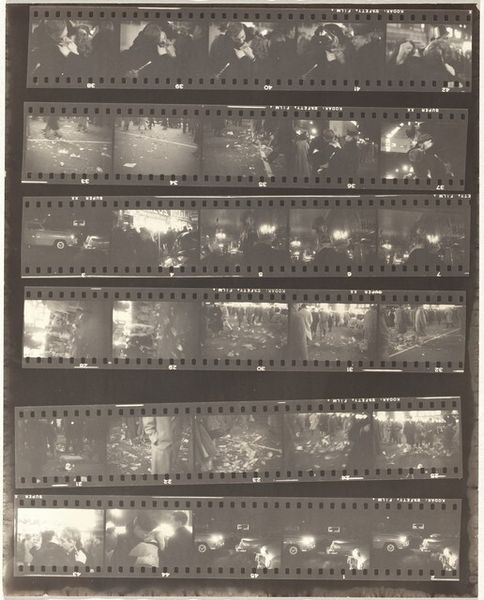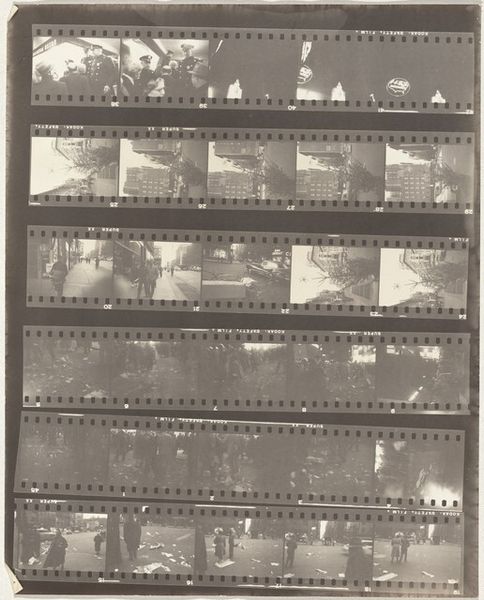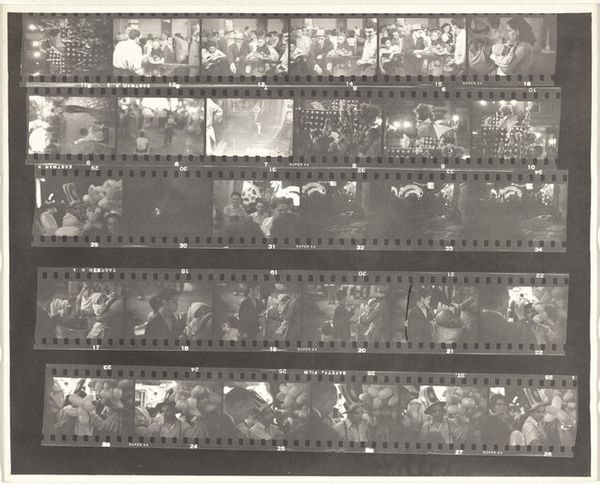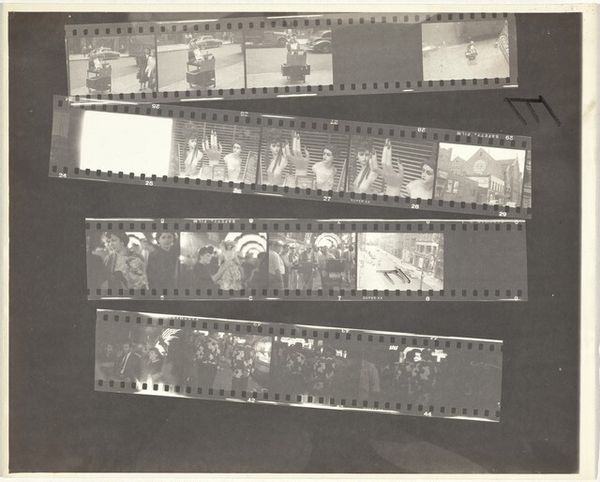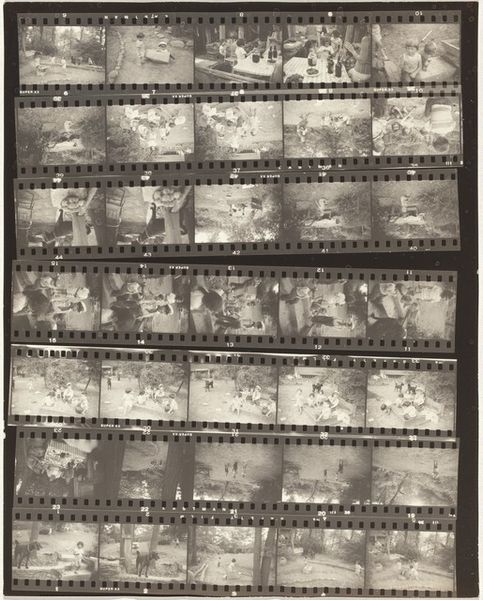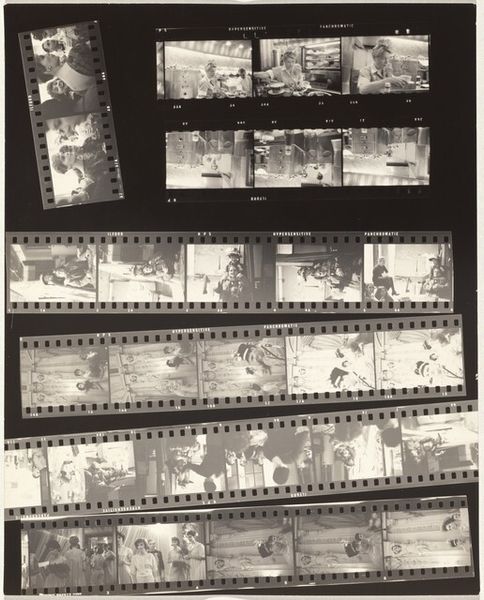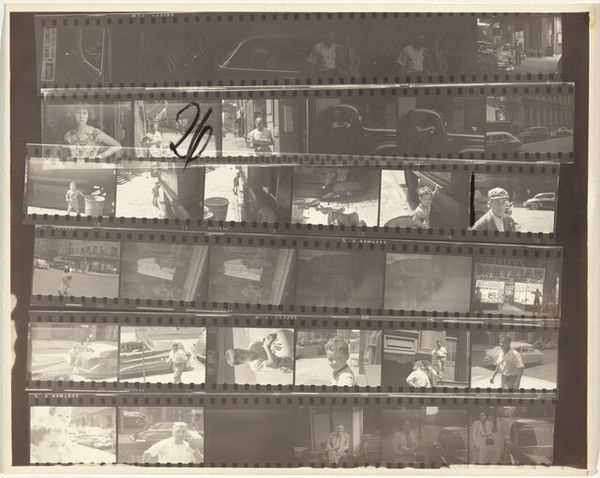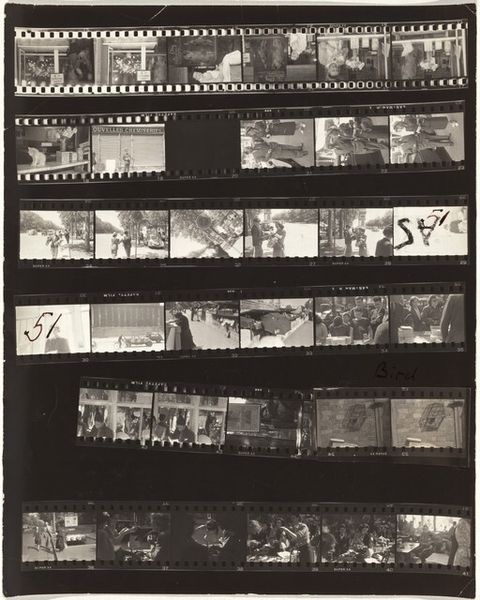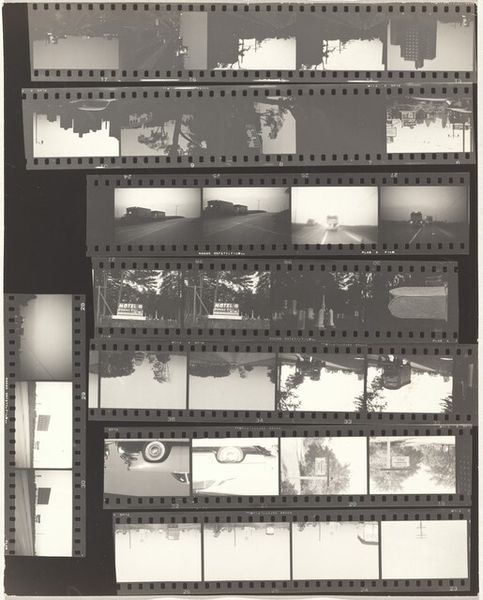
photography, gelatin-silver-print
#
street-photography
#
photography
#
gelatin-silver-print
#
modernism
#
realism
Dimensions: overall: 25.3 x 20.3 cm (9 15/16 x 8 in.)
Copyright: National Gallery of Art: CC0 1.0
Robert Frank's photographic work, "Guggenheim 91/Ford 14--Detroit," presents a sequence of images from a Ford factory in Detroit. Here, the dominant visual symbol is the assembly line itself – a modern labyrinth where men and machines are intertwined in an almost ritualistic dance. This linear progression echoes the ancient Roman concept of "fata," or fate, symbolized by the thread spun by the Fates, determining the course of life. In Frank's Detroit, the assembly line becomes the new thread of fate, dictating the rhythm of human existence. Historically, the assembly line represents industrial progress, yet Frank's lens reveals a deeper, more complex narrative. The repetitive motions of the workers evoke a sense of mechanical determinism, raising questions about human autonomy within the modern world. This echoes in Fritz Lang’s "Metropolis," where human figures merge with the machinery. The emotional weight of Frank’s images lies in the subtle contrast between human presence and mechanical dominance, engaging viewers in a profound meditation on the human condition. The cyclical nature of this theme resurfaces in contemporary discussions about automation, constantly evolving and demanding reinterpretation in our ever-changing world.
Comments
No comments
Be the first to comment and join the conversation on the ultimate creative platform.
